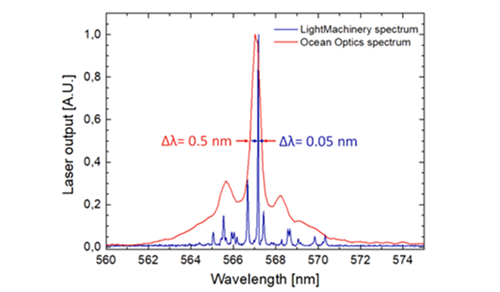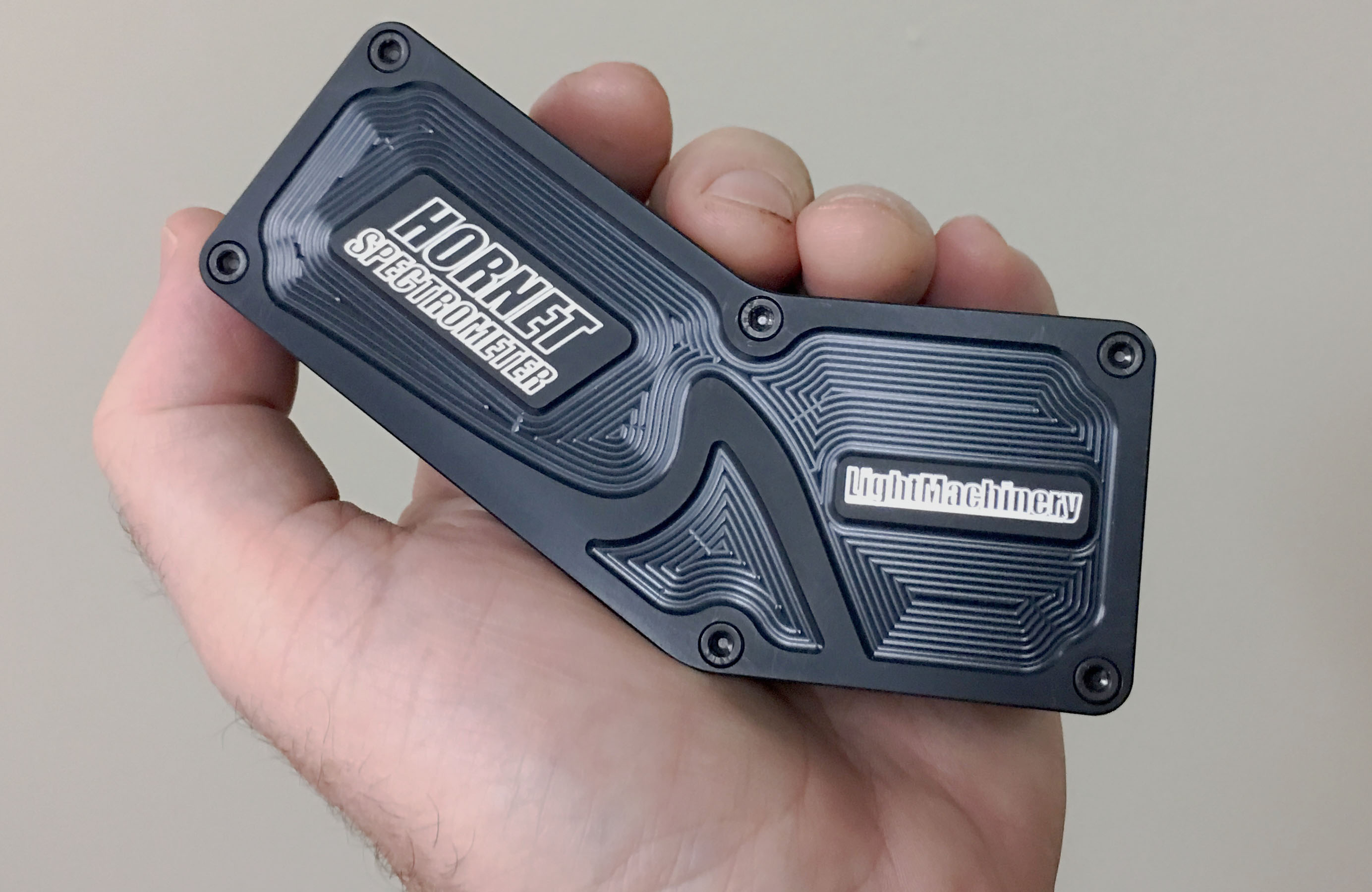It can be very deceptive to measure laser spectra (mode structure, mode hopping, drift, etc) with standard compact grating spectrometers, including those identified as high-resolution models. While their compactness, ruggedness, ease-of-use, absence of moving parts, and broad spectral coverage are indeed key qualities for general-purpose laser characterization spectrometers, they are often inadequate if the resolution is insufficient to distinguish individual modes. The HN-9332 spectrometer combines all the qualities listed above in addition to achieving sub-30 pm resolution while covering the full visible. For these reasons, Prof. Criante’s group used this model to characterize the plano-convex microfluidic dye laser that they developed (article in preparation). In his thesis6, Dr. Bonfanidi details the shortcomings of a standard “high-resolution” grating spectrometer for his measurements and compares it with the performance of the HN spectrometer. “The spectrometer (HR4000, Ocean Optics) used for the characterization has a resolution of 0.5 nm, that is much higher than the distance between two consecutive modes. This means that the spectra reported so far are strongly influenced by the performance of the measuring instrument (…). Therefore, we cannot be sure that our cavity amplifies a single mode or a small range of modes. To investigate this phenomenon, we have upgraded the setup (…) with a new high-resolution spectrometer (HN-9332, LightMachinery) which, based on an interesting patented technology, has a resolution of 20 pm. (…) As shown in the graph, the new spectrometer allows us to resolve the spectrum in a far better way. 6"

Figure obtained from [6]. Emission spectra of a plano-convex cavity filled with 5mMol of Rh6G in ethanol measured by the two different spectrometers: HR400, Ocean Optics (red) and HN-9332, LightMachinery (blue). The two spectrometers tell a very different story, since only the HN spectrometer can resolve the individual modes.
[6] Bonfadini, Silvio. "Microfluidic light sources integrated in lab on a chip platforms." PhD thesis, 2019, Politecnico di Milano, Italy.






